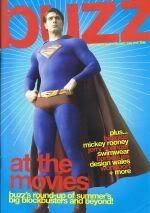Saw Week: Part II
 Well, that didn't take long. After being strangely impressed with the first Saw movie, I found that Saw II is just as bad as I remembered.
Well, that didn't take long. After being strangely impressed with the first Saw movie, I found that Saw II is just as bad as I remembered.
It opens with a trap: a police informant wakes up in a room with a kind of variant on the bear trap on his head. But while last time, Amanda had to cut her key out of someone else's body to win her freedom, this guy needs to retrieve his key from behind his own eye. The editing goes crazy as he attempts to do so, and the lighting is garish yellow and green, a colour scheme the film won't let go of for the rest of its runtime. The soundtrack has some quiet shrieks built into it, so as our nameless snitch takes a razor to his own face, the music screams for him. It's already far more extreme and gory than the first Saw movie, but sadly, that extra edge comes at a price. Saw II is nowhere near so clever or well written as the first one.
The main story, in this case, is about Detective Eric Matthews (played, amazingly, by Donnie Wahlberg, who never quite seems comfortable unless he's fiddling with a cigarette). Jigsaw has kidnapped his teenage son and locked him in a house with a selection of decidedly unsavoury characters, including - dun dun dun! - Amanda herself. Again, it's tough to watch this movie without remembering what's to come, and knowing the end of the film killed pretty much all the tension for me. While the criminals inside the house battle against time (and nerve gas) to win their freedom through a series of increasingly nasty traps, Det. Matthews is asked to just sit and talk to Jigsaw, watching what's going on in the house via a series of monitors and letting the timer in Jigsaw's lair tick down to zero.
Since it's pretty well established that Matthews is a dirty cop who gets his results by planting evidence and beating up witnesses, he's incapable of doing so, and ends up walking into his own trap. When the timer hits zero, he's chained to a wall in the bathroom from the first movie, while a safe in Jigsaw's house pops open to reveal that Matthews Jnr was "safe" all along. The monitors weren't showing a live stream at all, but rather events that happened several hours ago. It's a fairly neat trick that's spoiled by the lack of action outside the house: all Jigsaw wants is to sit and chat, spouting off about how most people don't deserve to live because they don't appreciate their lives (and, bizarrely, recounting an accident he had after he was diagnosed with cancer where he drove his car off a cliff and survived despite being impaled on a pole). And that's spoiled by the fact that already, Jigsaw doesn't really make sense. According to him, he never really kills anyone, he lets them make a choice. But in Saw II, most of the choices aren't choices at all.
The trap that I really remembered from this movie is the pit of needles. It's a wonderfully nasty idea, but it's sort of nonsensical. The first few traps are labelled with the names of the people in the house (Obi, apparently pronounced "Abi", and Xavier, pronounced like Professor Xavier; either Whannell or Bousman is apparently a massive nerd). The traps are supposed to relate to their particular weaknesses, like the way the informant at the beginning is forced to destroy his eye, or the way the wristcutter from the first movie has to fight through razorwire. But this time round, they don't really work. Who's supposed to go into the oven, and why? What's the deal with the wrist trap that Addison gets herself caught in? The idea that the only way through the maze is co-operation is one that'll recur in the later Saw movies, but it's not properly developed here.
What's weird is that I remember there being a lot more explanation and characterisation in this movie than there actually is. The film doesn't explain, for instance, why most of the characters were in jail; it establishes that that's what they have in common, but not why, beyond the fact that they were framed by Matthews. It's also not really clear why Amanda decides to put herself in harm's way; she's almost killed several times in the course of the film, and for no real benefit. She reveals herself at the end as Jigsaw's accomplice, but her only motivation in getting involved is, apparently, to trick the audience watching at home. Which is a bit silly, really.
The one bonus is that the acting isn't quite as bad in Saw II as it was in Saw. The script, unfortunately, is worse, though, and the concept is messier. It doesn't bode well for Saw III.










No comments:
Post a Comment